A vegetable that has become quite popular over the last few years is watercress. It is a dark, leafy vegetable that is produced in natural spring water. While it was used as nothing more than a garnish in the past, times have changed. In the past five years, it has become popular as a superfood that boasts a variety of health benefits. However, if you’re having a hard time getting your hands on this new healthy favorite, going for a watercress substitute can help you convincingly replicate recipes containing watercress.
What is watercress?
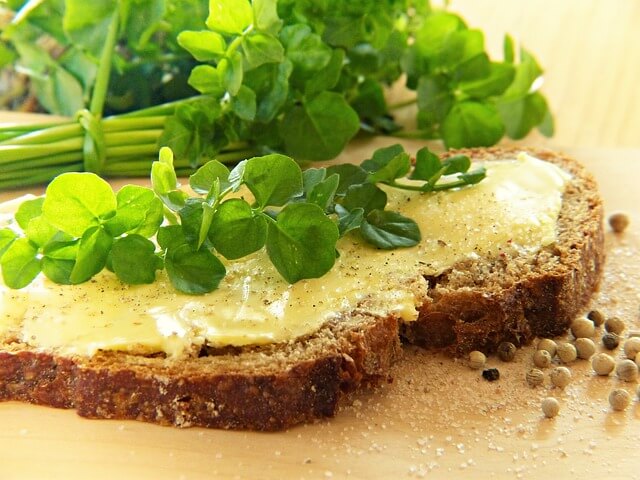
Watercress is a vegetable that has been around for thousands of years and was believed to have been a staple component of Roman soldiers’ diets. It is part of the cruciferous family, which also includes foods like arugula, kale, Brussels sprouts, and broccoli. As more attention has been brought to the health benefits of watercress in recent times, more people are making it a regular part of their diet than ever before.
How healthy (or unhealthy) is it?
Watercress is a very healthy vegetable that contains a large amount of nutrients needed by the body. It also contains antioxidants that can help increase sensitivity to insulin and lower glucose levels. Watercress contains vitamin K, which helps with bone health and offers calcium for bone strength and development. It also offers vitamin C, vitamin A, potassium, riboflavin, and more.
Nutritional Breakdown
Watercress | Amount (per 100 g) | % Recommended daily intake |
Calories | 11 kcal | 0.5% |
Total fat | 0.1 g | 0.2% |
Saturated fat | 0 g | 0% |
Carbohydrates | 1 g | 0.4% |
Cholesterol | 0 mg | 0% |
Salt | 41 mg | 2% |
Protein | 2 g | 4% |
Calcium | 120 mg | 12% |
Vitamin B-12 | 0 ug | 0% |
Potassium | 330 mg | 8% |
(Based on nutritional information from USDA.)
What recipes are watercress used in?
As a versatile green, watercress can be used in a variety of ways. It can be added to sandwiches, soups, and wraps for a healthy lunch, or fried in a pan with oil and pepper for a side dish to accompany your main meal. Watercress can also be added to smoothies, omelets, or even pasta sauce to offer additional nutrients to a meal. The most popular use of watercress is in salad, but the possibilities are endless with this versatile veggie.
Why do we need watercress substitutes?
Not everyone has convenient access to watercress depending on location, which means choosing a substitute is often a must. In other cases, you may wish to purchase a less perishable food if you only use watercress on an infrequent basis. It can also be useful to have a watercress substitute if you prefer something with a stronger flavor or a different texture.
Note:
🌱 = vegan
1. Arugula🌱
Best for: salads, pasta, pizza, sandwiches, roasted vegetables, and soups.
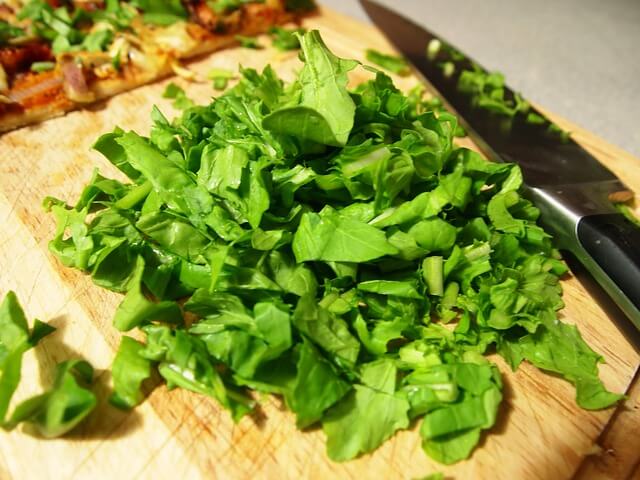
Overview
Arugula is another popular green that is often found in salads. It can also be referred to as rucola, rocket, or roquette. Regardless of the name you use, it is a highly versatile vegetable and both the leaves, seeds and flowers are edible. The leaves of arugula are bite-sized and tender with a distinct tangy flavor and contain many nutritious polyphenols and nitrates.
Advantages
With arugula, you get a green that has the same mild taste as watercress and a texture that is similar enough to pass for the authentic ingredient. You can also use younger or older varieties of arugula depending on your tastes. Fully grown leaves tend to offer the watercress flavor you might expect, while younger arugula leaves are a bit milder if that better suits your tastes.
Disadvantages
While arugula is nutritious compared to many foods, as a substitute for watercress, it doesn’t quite hold up. If you want the best nutrients possible, arugula may not be the right option for you. On top of that, the texture is a bit different from watercress. Arugula will stay firmer when cooked, whereas watercress softens up with the heat.
Nutritional breakdown
Arugula | Amount (per 100 g) | % Recommended daily intake |
Calories | 24 kcal | 1% |
Total fat | 0.6 g | 1% |
Saturated fat | 0 g | 0% |
Carbohydrates | 4 g | 1% |
Cholesterol | 0 g | 0% |
Salt | 29 mg | 2% |
Protein | 2 g | 4% |
Calcium | 176 mg | 18% |
Vitamin B-12 | 0 ug | 0% |
Potassium | 0 mg | 0% |
2. Radish sprouts🌱
Best for: salads, soups, kimchi, roasted vegetables, and sandwiches.
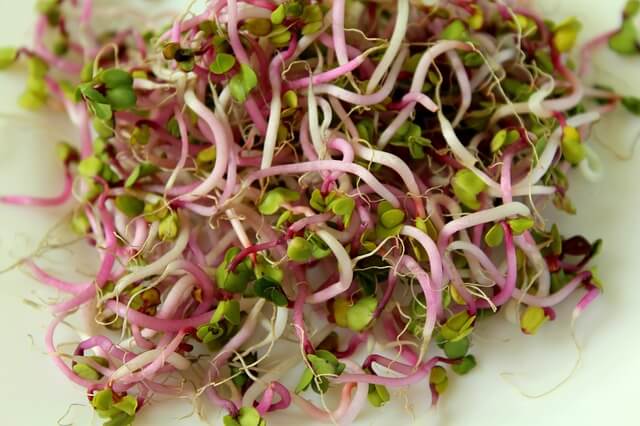
Overview
As you probably guessed from the name, radish sprouts come from radishes and have the same great taste as they do. These sprouts are a root vegetable in the same family as Brussels sprouts, cabbage, and broccoli. They are a versatile alternative that can be mixed with things like clover, alfalfa, and broccoli for salads and sandwiches.
Advantages
There are many things to appreciate about the humble radish sprout, starting with the fact that it offers vitamins A, B, C, E, and K. These small sprouts also come with many minerals like calcium, iron, zinc, and potassium. Radish sprouts have also been shown to offer anti-oxidants that can protect against certain types of cancer.
Disadvantages
One of the things that makes radish sprouts less popular is the fact that they aren’t always found in your grocery store’s produce section. This can make them inconvenient, although you do have the option of purchasing radish seeds and sprouting them on your own.
Nutritional breakdown
Radish sprouts | Amount (per 100 g) | % Recommended daily intake |
Calories | 43 kcal | 2% |
Total fat | 3 g | 5% |
Saturated fat | 0.8 g | 6% |
Carbohydrates | 4 g | 1% |
Cholesterol | 0 mg | 0% |
Salt | 6 mg | 0.3% |
Protein | 4 g | 8% |
Calcium | 51 mg | 5% |
Vitamin B-12 | 0 ug | 0% |
Potassium | 86 mg | 2% |
3. Spinach🌱
Best for: soup, pesto, lentils, calzones, and paneer.
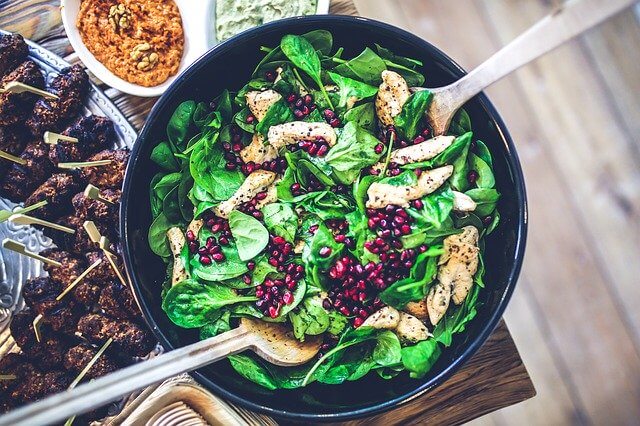
Overview
Another watercress substitute that is considered a superfood is none other than spinach. It’s another leafy green that can help with bone, skin and hair health. It contains huge amounts of important vitamins and minerals, while also providing protein to help you power through your day. This vegetable has been used throughout history by many cultures, as it can be used in many dishes and is inexpensive to buy or grow.
Advantages
Spinach is a healthy food that contains about 34% of your daily recommended vitamin C. It also comes in various varieties, including savoy spinach, semi-savoy spinach, and flat spinach, so you have a variety of options to work with. It can be consumed raw or can be cooked and added to many different types of dishes.
Disadvantages
One of the things that spinach cannot replicate when it comes to watercress is the actual flavor. The taste is not the same unless you add additional ingredients. Adding some pepper can help create a flavor closer to watercress. It’s also possible to mix spinach with nasturtium leaves to give an overall flavor more similar to that of watercress.
Nutritional breakdown
Spinach | Amount (per 100 g) | % Recommended daily intake |
Calories | 21 kcal | 1% |
Total fat | 0 g | 0% |
Saturated fat | 0 g | 0% |
Carbohydrates | 3 g | 1% |
Cholesterol | 0 mg | 0% |
Salt | 317 mg | 17% |
Protein | 2 g | 4% |
Calcium | 33 mg | 3% |
Vitamin B-12 | 0 ug | 0% |
Potassium | 233 mg | 6% |
(Based on nutritional information from USDA.)
4. Endive🌱
Best for: salad, roasted vegetables, sandwiches, and crudités.
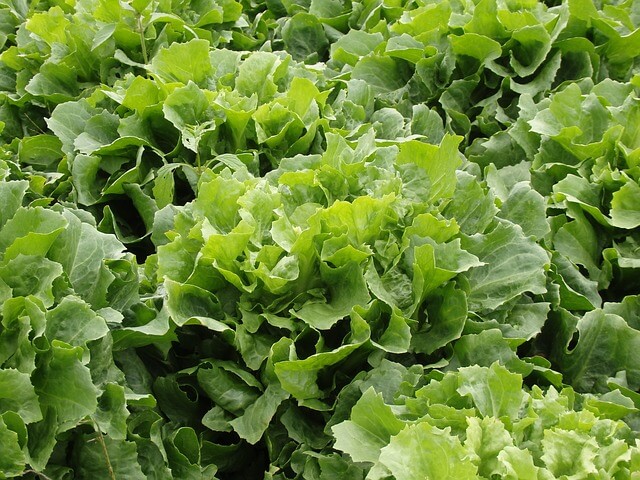
Overview
An endive is a vegetable from the same family as escarole, chicory, frisee, and radicchio. Just like its family members, endives have a slight bitterness and a crispy texture that is especially delightful in salads and sandwiches. Keep in mind that there are three different types of endives: the Belgian endive, the curly endive, and the the broad-leafed endive.
Advantages
This is a substitution option that can be eaten raw or cooked and added to many different dishes. The Belgian endive is the most common choice, but you can also experiment with the other types depending on the dish you are making. The broad-leafed endive, also known as escarole, is less bitter and has lighter leaves, while the curly endive, known as frisee, has intense bitterness and a darker green coloring.
Disadvantages
Unlike watercress, endives have a flavor that is truly unique. Rather than a mild and slightly spicy flavor, endives are best known for their bitterness. If you want a flavor or texture that is very similar to watercress, endives can be a gamble. Each of the different types of endive has a particular texture, with some being softer and others being crunchier.
Nutritional breakdown
Endive | Amount (per 100 g) | % Recommended daily intake |
Calories | 17 kcal | 0.8% |
Total fat | 0.2 g | 0.3% |
Saturated fat | 0 g | 0% |
Carbohydrates | 3 g | 1% |
Cholesterol | 0 mg | 0% |
Salt | 22 mg | 1% |
Protein | 1 g | 2% |
Calcium | 52 mg | 5% |
Vitamin B-12 | 0 ug | 0% |
Potassium | 314 mg | 8% |
5. Dandelion greens🌱
Best for: pasta, salads, soups, pesto, and smoothies.
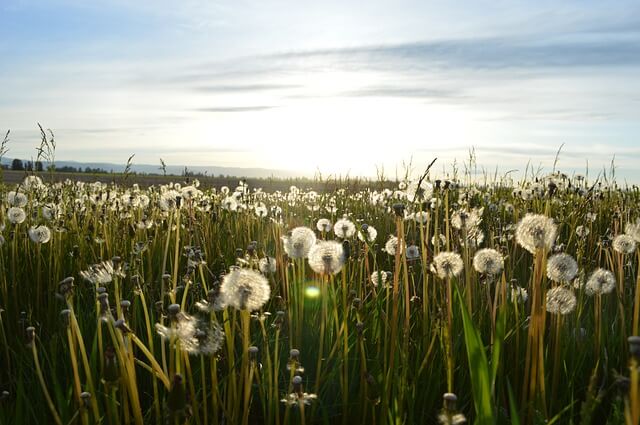
Overview
You may be surprised to hear that dandelion greens are actually a part of the sunflower plant family, which has hundreds of thousands of species, including thistles and daisies. These greens can be purchased at many grocery and health food stores, or you can also choose to pick and harvest them on your own. The best time to harvest dandelion greens is in the spring, as they will have a mild flavor and a tender texture.
Advantages
Dandelion greens are considered a great addition to the diet since they have a large number of nutrients. These greens have minimal calories but contain protein, calcium, iron, and several other minerals. The greens from dandelions can be used in many different recipes, from salads to soups and casseroles.
Disadvantages
The age of the leaves is something to be aware of if you use dandelion leaves as a substitute for watercress. If you are looking for very little bitterness, you want to be sure you choose young leaves. Those who want extra bitterness will want to go for aged leaves instead.
Nutritional breakdown
Dandelion greens | Amount (per 100 g) | % Recommended daily intake |
Calories | 45 kcal | 2% |
Total fat | 0.7 g | 1% |
Saturated fat | 0.2 g | 2% |
Carbohydrates | 9 g | 3% |
Cholesterol | 0 mg | 0% |
Salt | 76 mg | 4% |
Protein | 3 g | 6% |
Calcium | 187 mg | 19% |
Vitamin B-12 | 0 ug | 0% |
Potassium | 397 mg | 10% |
6. Kale🌱
Best for: salads, pizza, poultry, tamales, and stuffing.
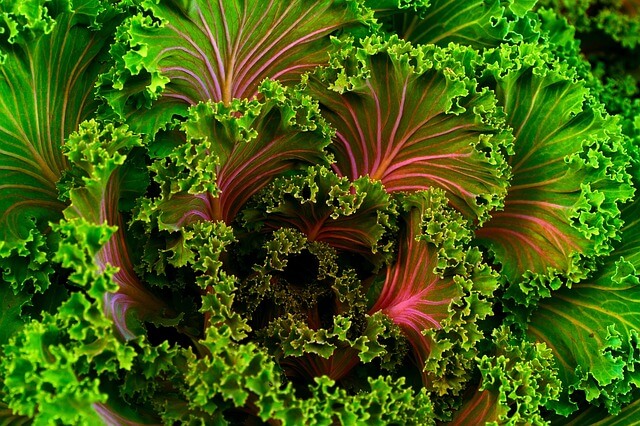
Overview
Kale is another green, leafy vegetable and comes from the cabbage family. This is a very popular vegetable that has become increasingly prevalent due to its high levels of minerals, fiber, and vitamins. While it used to be used primarily as a garnish, you can now see kale in everything from salad to smoothies and more. Kale comes in various colors and can range from green to white and even pink and purple.
Advantages
As with many of the other watercress substitutes on our list, kale is very healthy. It has huge amounts of vitamin K and vitamin B-6, which you don’t see in many other watercress alternatives. It is also one of the more robust vegetables in terms of staying fresh, so you can stick it in your refrigerator and use it again days later without any worry. This is also an ingredient that is very easy to find, which is another nice bonus.
Disadvantages
Many people enjoy the flavor of kale, but it isn’t going to be the same as watercress. If you choose to eat it raw, it’s going to be similar to cabbage in terms of flavor. With cooked kale, you can expect a dose of bitterness, but you can also go for young kale if you prefer a milder flavor.
Nutritional breakdown
Kale | Amount (per 100 g) | % Recommended daily intake |
Calories | 35 kcal | 2% |
Total fat | 1 g | 2% |
Saturated fat | 0.2 g | 2% |
Carbohydrates | 4 g | 1% |
Cholesterol | 0 mg | 0% |
Salt | 53 mg | 3% |
Protein | 3 g | 6% |
Calcium | 254 mg | 25% |
Vitamin B-12 | 0 ug | 0% |
Potassium | 348 mg | 8% |
(Based on nutritional information from USDA.)
The Bottom Line
Watercress has gained popularity in recent years and is a versatile ingredient that can be used in all sorts of dishes. If you find yourself in a situation where you need an alternative to this vegetable, there are plenty that you can use. While none of them are going to be exactly the same as watercress, many of them are similar or bring a unique flair that will stand out in your favorite recipes.
Top vegan picks
Each of the watercress substitutes we’ve listed are vegan, so you can pick and choose whichever has the flavor and texture that you most enjoy. If you are looking for a vegan option that you can easily access, you may want to try kale or spinach, as both are available at the majority of supermarkets and health food stores. Arugula is also an excellent option that has a taste similar to watercress.
Top healthy picks
As all of the substitutes above are nutritious vegetables, you’re going to get a healthy ingredient no matter which you choose. Dandelion green and kale are a great source of potassium and calcium, while endive and spinach have very little fat. On the other hand, if you are on a low-sodium diet, the endive is going to be the go-to alternative, as it has very little salt when used fresh, rather than from a can or jar.
Top convenient picks
Many of the watercress substitutes are fairly convenient, although they also typically require some amount of preparation. For instance, kale and arugula can both be purchased nearly anywhere, but you may need to do some chopping or sautéing to create the recipe you want. Dandelions may be the least convenient if you are harvesting the greens on your own.
Top convincing picks
If you’re looking for the most convincing watercress alternative, you primarily want something that has the same taste and texture. While none of the alternatives are going to be complete replicas of watercress, some of them do come close. Arugula has the closest taste to watercress, although the texture isn’t entirely the same. The next best option you have is spinach, which is widely available, meaning no extra hassle trying to seek it out.
Sources:
https://tastessence.com/leafy-vegetables-to-use-in-place-of-watercress
https://www.medicalnewstoday.com/articles/285412#benefits
https://www.medicalnewstoday.com/articles/282769
https://www.medicalnewstoday.com/articles/270609
https://www.mybluprint.com/article/what-are-endives
https://www.thespruceeats.com/what-does-endive-mean-995658

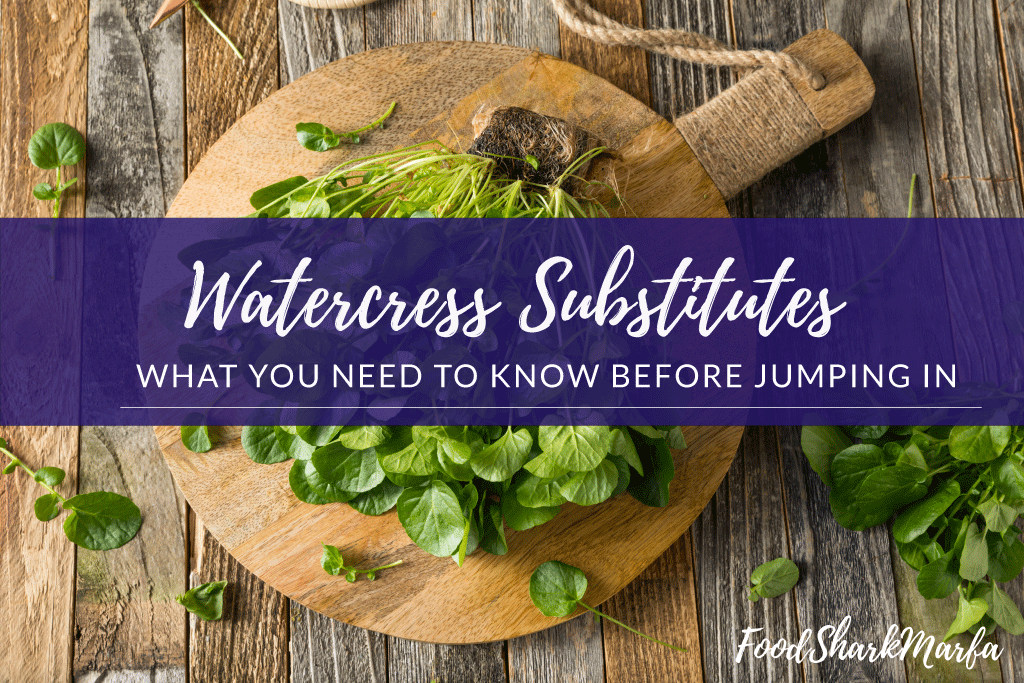

This is really helpful. I’ve tried so hard to find watercress substitutes for my recipe. I made gammon with watercress & mustard lentils, but I didn’t have watercress at that time. Fortunately, there was some kale in my garden and I mixed this substitute with gammon. At last, the meal tasted very well. Thank you so much!